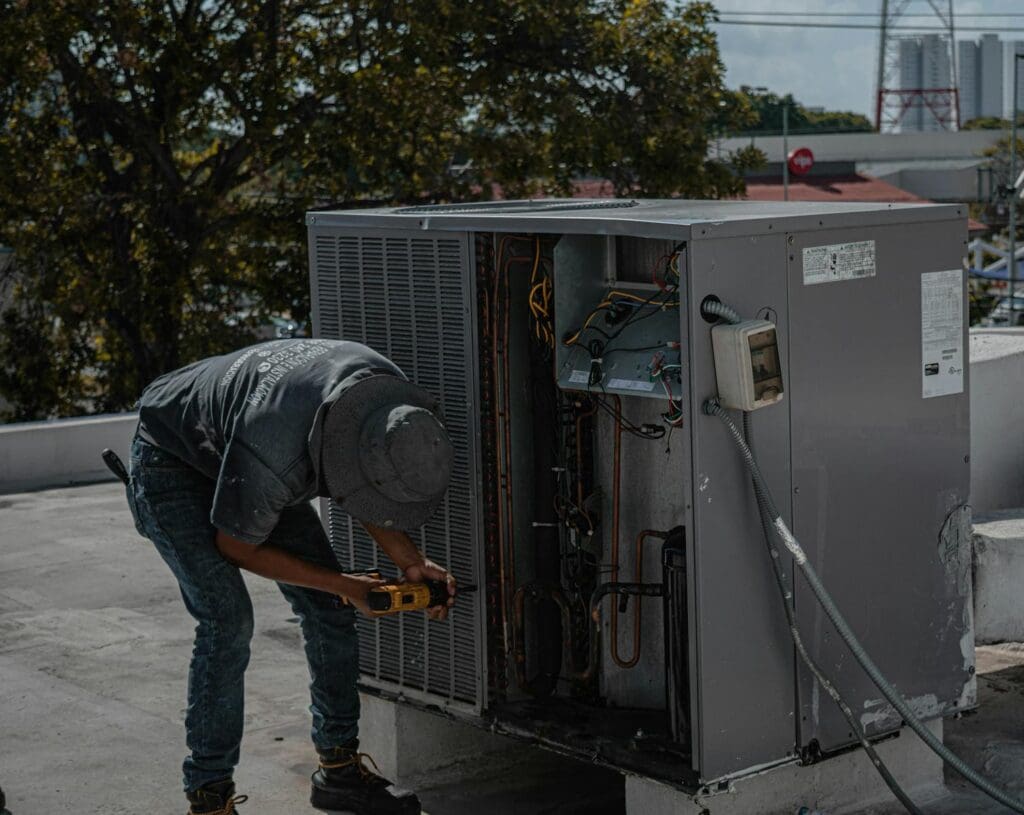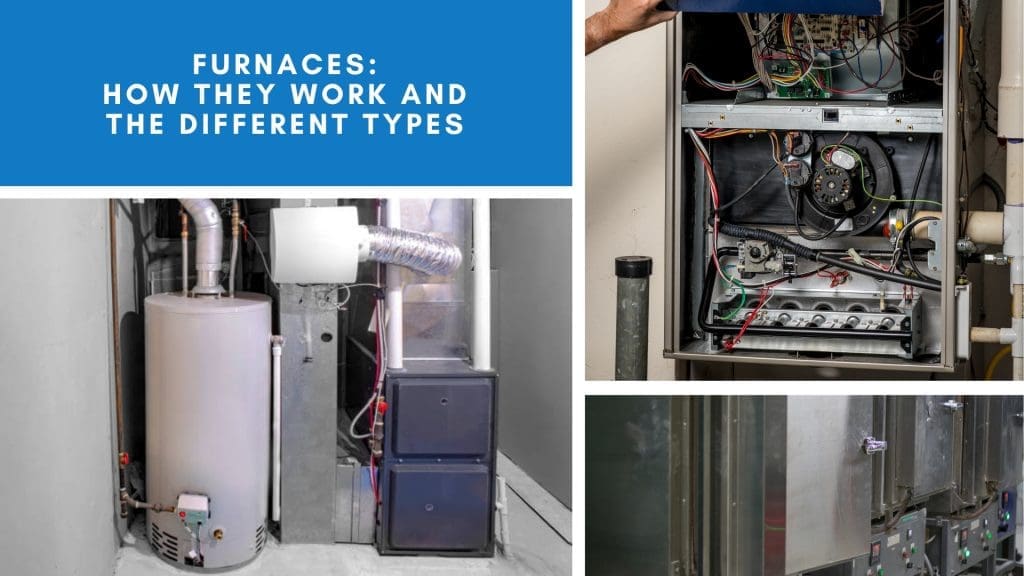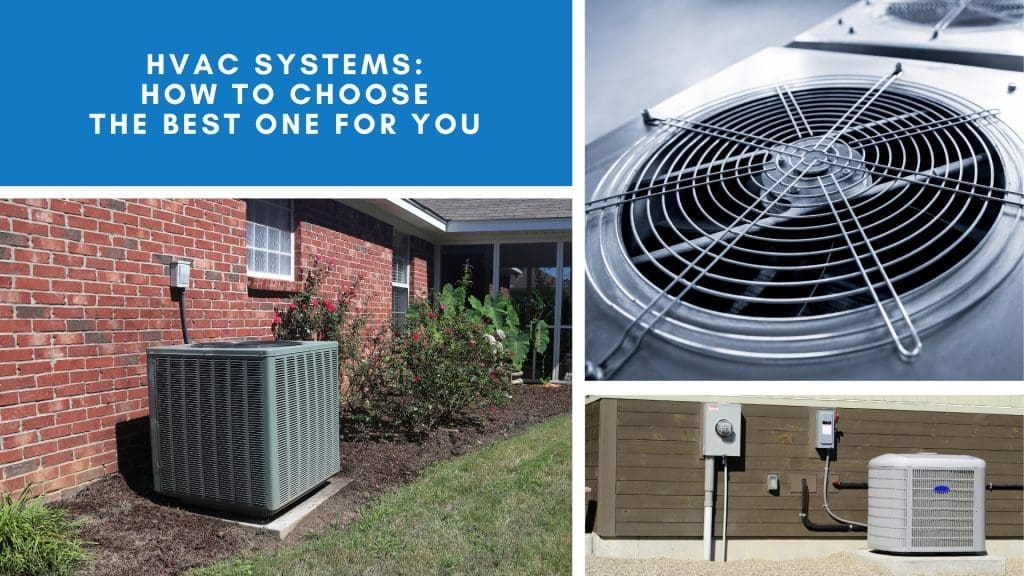Outside AC Unit Fan Not Running But Fan Inside Is Running
When the outside AC unit fan isn’t running but the inside is, it can be a cause for concern. This issue can disrupt the comfort of your home or business.
Understanding why this happens is the first step towards finding a solution. There could be several reasons, from simple power issues to more complex component failures.

In this guide, we’ll explore these potential causes. We’ll also provide a step-by-step troubleshooting guide to help you identify the problem.
Remember, while some issues can be resolved with basic troubleshooting, others may require professional attention. It’s crucial to know when to call in the experts to avoid causing further damage.
At LC Heating and Air Conditioning, we’re committed to helping you maintain a comfortable and efficient environment. So, let’s dive in and learn more about your AC system and how to keep it running smoothly.
Stay tuned for practical tips, preventative maintenance advice, and insights on when to seek professional cooling system repair.
Understanding Your AC System
To effectively tackle AC issues, it’s important to understand how your system functions. An air conditioning system works by removing heat from the indoors and expelling it outside. This process relies on various components working together harmoniously.
The inside unit absorbs the heat from your home, while the outside unit disperses it into the atmosphere. The outside AC unit fan plays a crucial role in this heat exchange process, preventing the system from overheating and maintaining efficiency.
The Role of the Outside Unit Fan
The outside unit fan’s primary function is to cool the refrigerant by moving air across the condenser coils. It helps dissipate the absorbed heat effectively into the outdoor air.
If this fan stops running, the system can’t efficiently release the heat, causing strain on the entire unit. This can lead to increased energy consumption and reduced cooling performance, underscoring the fan’s vital role.
Common Causes for Outside AC Unit Fan Not Running Issues
Several factors can cause the outside AC unit fan to stop running. Identifying these issues early can save you time and hassle. Understanding the underlying problems can help you take effective action.
Let’s explore some common causes of fan malfunctions:
- Thermostat settings: Incorrect settings or a malfunction can prevent the fan from engaging.
- Power supply issues: A tripped breaker or blown fuse can interrupt electricity to the unit.
- Capacitor or contactor failure: These components are critical for starting and running the fan motor.
- Obstructions or damage: Debris, twigs, or bent blades can stop the fan from spinning.
- Motor problems: A faulty motor can lead to the fan not starting or stopping mid-operation.
Recognizing these problems can be your first step toward restoring efficient cooling. It’s essential to assess each of these possibilities carefully.
Safety First: Precautions Before Troubleshooting
Before diving into troubleshooting, prioritize your safety. Always power off your AC unit at the circuit breaker. This prevents accidental shocks while you’re inspecting the outside unit.
Keep your hands and tools clear of moving parts. Ensure that all parts have stopped completely before examining them. Taking these simple precautions can make your repair process much safer and more effective.
Step-by-Step Troubleshooting Guide
Let’s tackle this challenge with a methodical approach. Here’s a step-by-step guide to troubleshooting your outside AC unit fan issue:
- Check the thermostat and power supply.
- Inspect the circuit breaker and fuses.
- Examine the capacitor and contactor.
- Look for visible damage or obstructions.
- Assess the fan motor and blades.
Each step is crucial in identifying and resolving the issue efficiently. Let’s delve into each one to help you diagnose the problem accurately.
Check Thermostat and Power Supply
Start with the basics by examining your thermostat settings. Ensure it’s set to “cool” and the temperature is lower than the current room temperature.
Confirm the AC unit is receiving power. Check if the power switch is on and the outlet is functioning properly. It’s a simple check, but often overlooked.
Inspect the Circuit Breaker and Fuses
Next, head to your circuit breaker panel. Verify the breaker for your AC unit hasn’t tripped. A tripped breaker can interrupt power to the outside unit fan.
Check fuses for continuity if your AC unit uses them. A blown fuse might be the culprit behind the non-functional fan.
Examine the Capacitor and Contactor
Now, shift your focus to the capacitor and contactor. The capacitor jumpstarts the fan motor—look for bulging or leaks, which indicate failure.
Inspect the contactor for visible damage or wear. It controls power to the fan motor, and damage here can halt fan operation.
Look for Visible Damage or Obstructions
Survey the fan blades and surrounding area for any visible damage. Twisted or blocked blades can stop the fan from running smoothly.
Check for debris or obstructions around the fan. Leaves, dirt, or twigs might have found their way inside, hindering performance.
Assess the Fan Motor and Blades
Lastly, assess the fan motor’s health by listening for unusual noises. Grinding sounds often signal motor issues.
Examine the blades’ condition and alignment. Properly aligned and intact blades are essential for smooth fan functioning. Make sure there aren’t any loose or wobbly parts affecting operation.
When to Call a Professional: LC Heating and Air Conditioning
You’ve done some troubleshooting, but complex problems require expert hands. That’s where professionals like us come in. Our team at LC Heating and Air Conditioning is equipped to tackle any HVAC challenge.
Recognizing the limits of DIY repairs can save time and stress. Contacting a professional ensures the issue is resolved effectively. We’re ready to assist when you need us most.
Prompt professional help prevents further damage and system inefficiencies. This not only restores comfort but also guards against costlier repairs. Let us provide peace of mind and quality service.
Recognizing Complex Issues
If issues persist beyond basic troubleshooting, it may indicate a deeper problem. Sounds of grinding or buzzing hint at mechanical failure.
Visible wiring issues or persistent power problems also require expert intervention. Trusting professionals ensures accurate diagnosis and repair.
The Benefits of Professional Maintenance
Routine professional maintenance extends the life of your AC unit. Our team identifies potential problems before they grow.
Regular check-ups enhance efficiency, saving energy costs over time. Expert maintenance keeps your system running smoothly, season after season.
Preventative Maintenance Tips
Regular care is key to avoiding future AC hassles. Investing a little time can save you discomfort and cost. Below are simple ways to keep your system humming smoothly:
- Clean the Unit: Remove debris around the outside unit to ensure free airflow.
- Check Filters: Replace or clean air filters every 1-3 months for optimal performance.
- Schedule Professional Check-Ups: Arrange for seasonal inspections by certified technicians.
- Monitor Thermostat Settings: Ensure your thermostat is on the correct setting.
These small steps make a big difference in your system’s longevity. Preventative maintenance not only boosts efficiency but also reduces energy bills. A well-maintained AC helps maintain a cozy home environment.
Conclusion: Ensuring Customer Satisfaction and Quality Service
Reliable AC performance ensures comfort through every season. By understanding and maintaining your system, you can prevent unexpected issues.
When the going gets tough, our team at LC Heating and Air Conditioning is here to help. Your peace of mind is our top priority.


